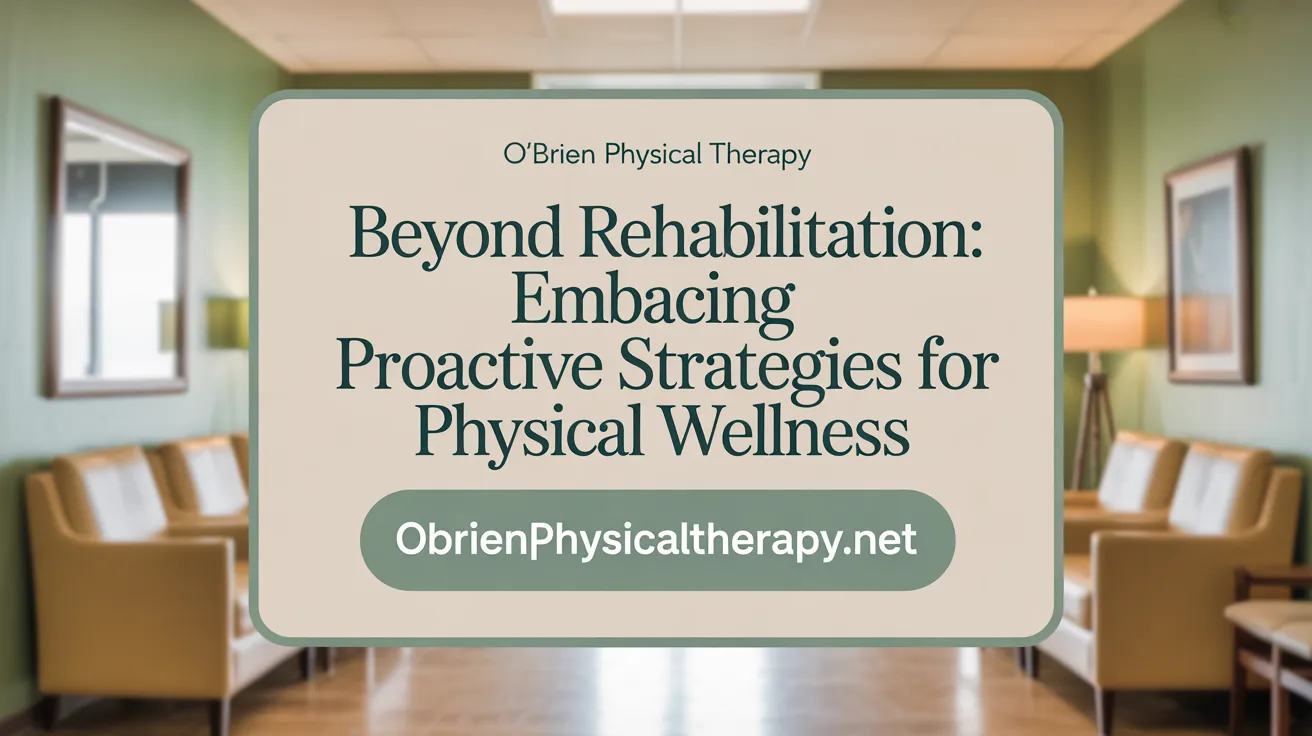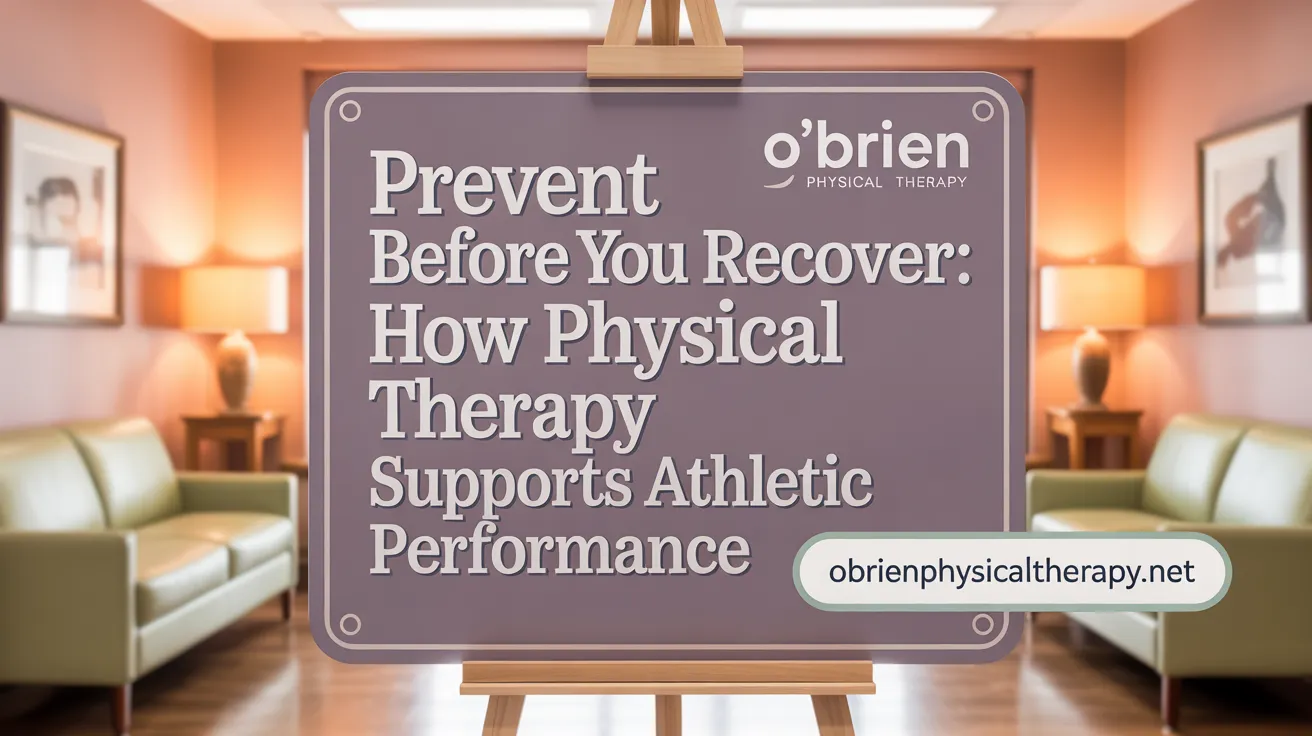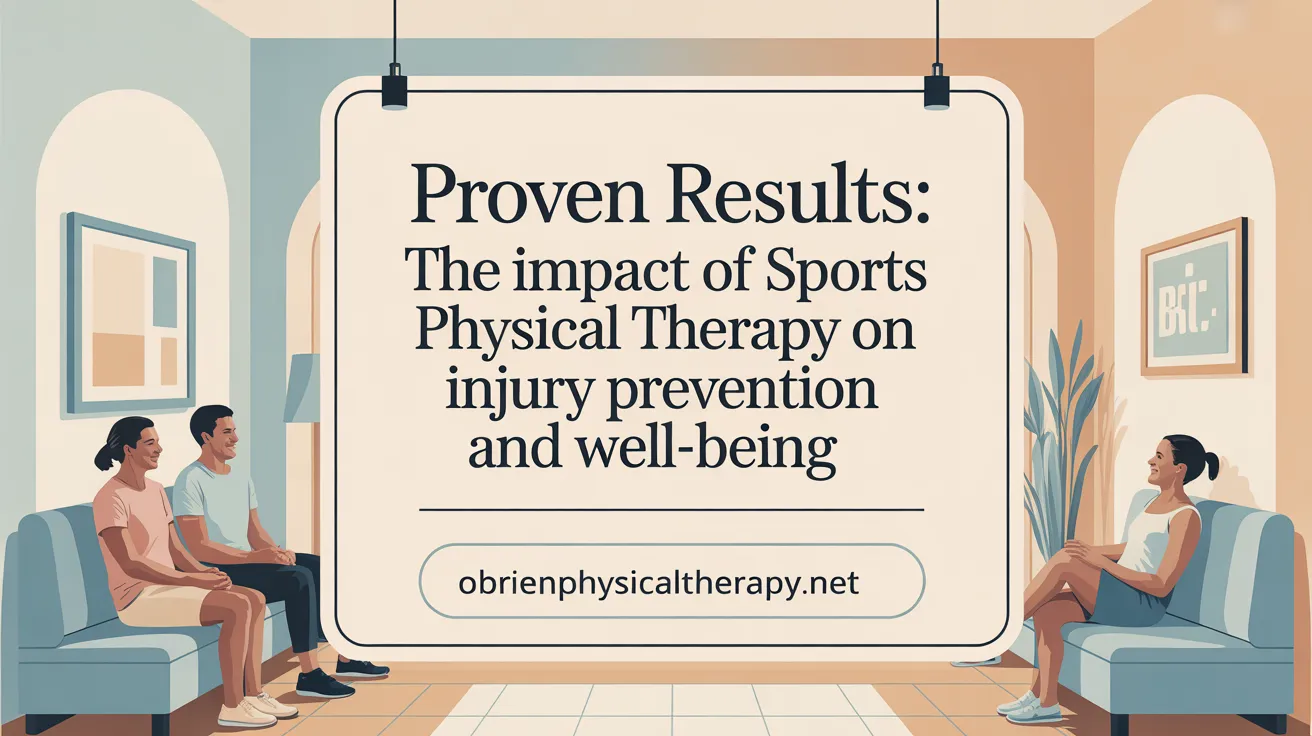Understanding Physical Therapy’s Place in Sports Injury Prevention
Athletes at all levels face the persistent risk of injury due to the intense physical demands of their sports. While physical therapy is widely recognized for its role in injury recovery, its preventive benefits are becoming increasingly valued. This article explores how many athletes use physical therapy for injury prevention, what practices are involved, and why its role is essential for enhancing sports performance and reducing injuries.
Prevalence of Physical Therapy Use Among Athletes for Injury Prevention
 Physical therapy plays a significant role in injury prevention among athletes, with many perceiving it as vital not only for rehabilitation but also for avoiding injuries altogether. A substantial 62.9% of athletes reported that physical therapy mainly addresses recovery after injuries, yet there is growing interest in utilizing PT proactively for injury prevention.
Physical therapy plays a significant role in injury prevention among athletes, with many perceiving it as vital not only for rehabilitation but also for avoiding injuries altogether. A substantial 62.9% of athletes reported that physical therapy mainly addresses recovery after injuries, yet there is growing interest in utilizing PT proactively for injury prevention.
Athletes tend to favor athletic trainers over physical therapists when it comes to injury prevention. The reason for this preference largely stems from their perceived expertise and the trust built through ongoing relationships. In many sporting settings, athletic trainers are the first line of defense, often involved in designing warm-up routines, strength programs, and early sign detection.
Regarding actual utilization, statistics indicate that more than half of athletes engage with physical therapy services for injury prevention. An example from a recent survey highlights that 62.9% of athletes utilize physical therapy in the context of recovering from injuries and preparing for future competition.
While physical therapists are extensively educated in preventive care—including strength and flexibility exercises—they are mostly perceived as specialists for post-injury care. Nevertheless, most sports physical therapists are actively involved in planning and implementing injury prevention programs (IPPs). These programs are tailored based on athletes’ injury histories, preseason assessments, and sports-specific injury data.
These initiatives are primarily integrated into warm-up routines, instruction-guided exercises, and individualized training plans. Athletes and trainers often evaluate the success of these programs by comparing injury rates between seasons. The rise in physical therapy engagement demonstrates a recognition of its importance beyond mere recovery, extending towards performance optimization and injury risk reduction.
In essence, physical therapy’s role in sports is evolving. It increasingly encompasses strategies that go beyond treatment—focusing on proactive measures to enhance athletic longevity and safety. This proactive approach is supported by data showing a high percentage of athletes and sports programs integrating physical therapy into routine injury prevention efforts.
The Role and Benefits of Physical Therapy in Injury Prevention for Athletes

What is the role and benefit of physical therapy in injury prevention for athletes?
Physical therapy is essential in helping athletes avoid injuries before they happen. It begins with thorough assessments where physical therapists analyze movement patterns, strength, flexibility, and overall biomechanics. Identifying abnormalities, imbalances, or weaknesses helps in designing targeted strategies to correct these issues.
Athletes benefit from personalized exercise programs that focus on building strength in key muscles, improving flexibility, and enhancing joint stability. These tailored routines are crafted based on each athlete’s injury history, sport-specific demands, and preseason screening results. Such programs aim to prepare the body to better handle physical stresses and reduce injury risk.
Correcting improper biomechanics and muscular imbalances is a core aspect of injury prevention. Physical therapists teach proper movement techniques, improve neuromuscular control, and develop strength in underactive muscles. This not only reduces the likelihood of strains and sprains but also raises overall athletic performance.
Enhancing stability and flexibility through manual therapy, stretching, and strength training further decreases injury chances. For instance, improving hip and core stability can prevent knee injuries, while increased flexibility can lower the risk of muscle tears.
In addition, physical therapists focus on training that improves balance and proprioception, which are crucial for sports involving rapid directional changes and jumping. This helps athletes maintain better control during their activities, decreasing falls and ligament injuries.
Combining injury prevention with performance enhancement, physical therapy supports athletes in reaching optimal mobility, strength, and resilience. This proactive approach not only keeps athletes healthier but also extends their careers by reducing downtime from injuries. Overall, integrating physical therapy into sports training fosters a safer environment for athletes at all levels, promoting long-term performance and health.
Common Physical Therapy Practices and Strategies for Injury Prevention

What are common practices and strategies involving physical therapy for injury prevention among athletes?
Physical therapy plays a vital role in preventing injuries in athletes by employing various targeted strategies. A fundamental approach involves the implementation of injury prevention programs (IPPs) that are carefully tailored based on the athlete’s injury history, sport-specific risks, and preseason assessments. These programs often include structured warm-up routines designed to prepare muscles, increase circulation, and elevate body temperature. Warm-up sessions are typically led by coaches or trainers and are a primary method for reducing injury risk.
Cool-down routines follow training sessions and competitions, lasting roughly twice as long as warm-ups, focusing on gradually reducing heart rate and stretching muscles to prevent stiffness and soreness. Incorporating dynamic stretching and flexibility exercises during warm-ups enhances muscle stretchability and contractility, which lowers the likelihood of strains.
Strength training exercises form a core component, targeting muscle groups prone to imbalances. Correct technique and full range of motion in these exercises are essential to stabilize joints and protect against injury. Physical therapists also emphasize neuromotor control, including balance and proprioception drills, such as stability exercises, plyometrics, and coordination drills, that enhance an athlete's body awareness and control over movement.
The proper use of equipment, such as supportive footwear and protective pads, combined with education on sport-specific techniques, helps further reduce trauma and overuse injuries. Regular monitoring of injury recovery and adherence to rehabilitation protocols ensures that athletes do not return to activity prematurely, minimizing the risk of re-injury. Overall, integrating these physical therapy practices into training routines creates a comprehensive defense against sports injuries, promoting longevity and peak performance.
Effectiveness of Sports Physical Therapy in Preventing Injuries

Can sports physical therapy effectively prevent injuries?
Yes, sports physical therapy can significantly reduce the risk of injuries among athletes. Physical therapists use detailed assessments to identify muscle imbalances, movement inefficiencies, and weaknesses that may predispose players to injuries. They develop personalized exercise programs focusing on improving flexibility, strength, and neuromuscular control.
Educational efforts are also central, as therapists teach correct techniques, effective warm-up routines, and proper body mechanics to prevent undue stress during activity. These strategies, combined with conditioning and flexibility exercises, enhance the body's resilience, especially against overuse injuries.
Proactive interventions aim to optimize movement patterns and reinforce muscle balance, thus decreasing injury occurrence and severity. When injury does occur, physical therapy expedites recovery, reducing downtime and enhancing overall performance.
How does assessment and correction of biomechanical flaws help?
Physical therapists assess athletes’ movement patterns using methods such as video analysis and functional testing. This helps identify biomechanical flaws like poor posture, improper technique, or muscle imbalances.
Corrective exercises target these issues, promoting better alignment and coordination. For example, strengthening weak muscles and stretching tight ones restore proper biomechanics, which reduces abnormal stress on joints and tissues.
By addressing these flaws early, physical therapy prevents minor issues from escalating into serious injuries, thereby protecting the athlete’s health and prolonging their athletic career.
What is the role of education on warm-up and body mechanics?
Education on warming up and proper body mechanics is a cornerstone of injury prevention. Physical therapists instruct athletes on structured warm-up routines that prepare muscles and tendons for activity, reducing the likelihood of strains and tears.
They also emphasize correct technique—such as proper landing, cutting, and lifting—tailored to each sport. Proper body positioning during movement minimizes stress and injury risk.
Incorporating these educational components into regular training builds awareness and ingrains safe movement habits, contributing to long-term injury prevention.
How are conditioning and performance programs designed?
Conditioning and performance enhancement programs are personalized based on an athlete's injury history, sport-specific demands, and physical assessments. Physical therapists craft programs that include strength training, agility exercises, and flexibility routines.
These tailored plans improve overall athletic capacity, enabling athletes to perform optimally while minimizing the risk of strain or overuse injuries. Incorporating advanced movement analysis ensures exercises are biomechanically sound, further reducing injury chances.
Such comprehensive programs not only prevent injuries but also enhance performance during competitions.
In what ways does physical therapy reduce injury occurrence and severity?
Physical therapy combats injuries by strengthening vulnerable areas, correcting movement patterns, and educating athletes on injury prevention strategies. It helps in early identification of risk factors, allowing for prompt intervention.
Post-injury, therapy accelerates healing and restores function, often preventing minor issues from escalating into chronic problems.
Studies show that athletes engaged in physical therapy-focused preventive measures experience fewer injuries, less downtime, and more consistent performance. Overall, through assessment, education, and targeted exercises, sports physical therapy plays a vital role in safeguarding athletes against injuries and limiting their severity.
Physical Therapy’s Importance to Sports Performance and Long-Term Athletic Health
How important is physical therapy to sports performance and injury prevention?
Physical therapy plays a vital role in enhancing sports performance and reducing injury risks. It involves comprehensive assessments of strength, flexibility, movement patterns, and biomechanics to identify potential weaknesses or imbalances. Unlike approaches that focus solely on post-injury recovery, performance-oriented physical therapy aims to proactively improve an athlete’s physical capacity.
With tailored exercise programs, physical therapists help develop resilience, refine technique, and correct movement flaws that could lead to injury. They also provide biomechanical analysis through video assessments and functional testing, allowing for precise adjustments in an athlete's technique and form.
Furthermore, physical therapy emphasizes injury prevention strategies through individualized injury prevention programs (IPPs). These programs often include warm-up routines, strength and flexibility exercises, and education on proper equipment use. These proactive measures not only reduce the likelihood of injuries like sprains or stress fractures but also support athletes in maintaining peak performance over longer careers.
By addressing physical vulnerabilities early and optimizing body mechanics, physical therapy fosters long-term athletic health. Athletes can perform at higher levels, recover faster from injuries, and enjoy greater career longevity. Overall, integrating physical therapy into sports routines is essential for sustainable performance and injury resilience.
Conclusion: A Critical Partner in Athletic Injury Prevention
As injury rates continue to challenge athletes in all sports disciplines, physical therapy emerges as a vital component not only for recovery but increasingly as a proactive strategy for injury prevention. While many athletes still primarily associate physical therapy with post-injury rehabilitation, growing evidence and athlete demand highlight its expanding role in preventing injuries before they occur. Through comprehensive assessments, customized exercise regimens, and education on proper techniques, physical therapy addresses the root causes of injury risk and enhances overall athletic performance. Integrating physical therapy into regular training routines supports athlete longevity, reduces downtime, and contributes significantly to safer sports participation. It is clear that physical therapy is not just a treatment option but a crucial partner in promoting athletic health and sustaining competitive performance.
References
- Perceptions of Physical Therapy and The Role of Physical ...
- Performance Physical Therapy is Sports Physical Therapy: Why our ...
- How injury prevention programs are being structured and ...
- The Role of Physical Therapy in Sports: An Athlete's Guide
- Ensuring a Strong Comeback: Return-to-Sport Criteria for Athletes in ...
- Ways Physical Therapy Can Improve Your Sports Performance
- Preventing Common Sports Injuries with Physical Therapy
- The Key Benefits of Physical Therapy for Athletes: From Injury ...
- How Athletic Training & Physical Therapy Help Athletes
- Sports injury prevention programmes from the sports physical ...
